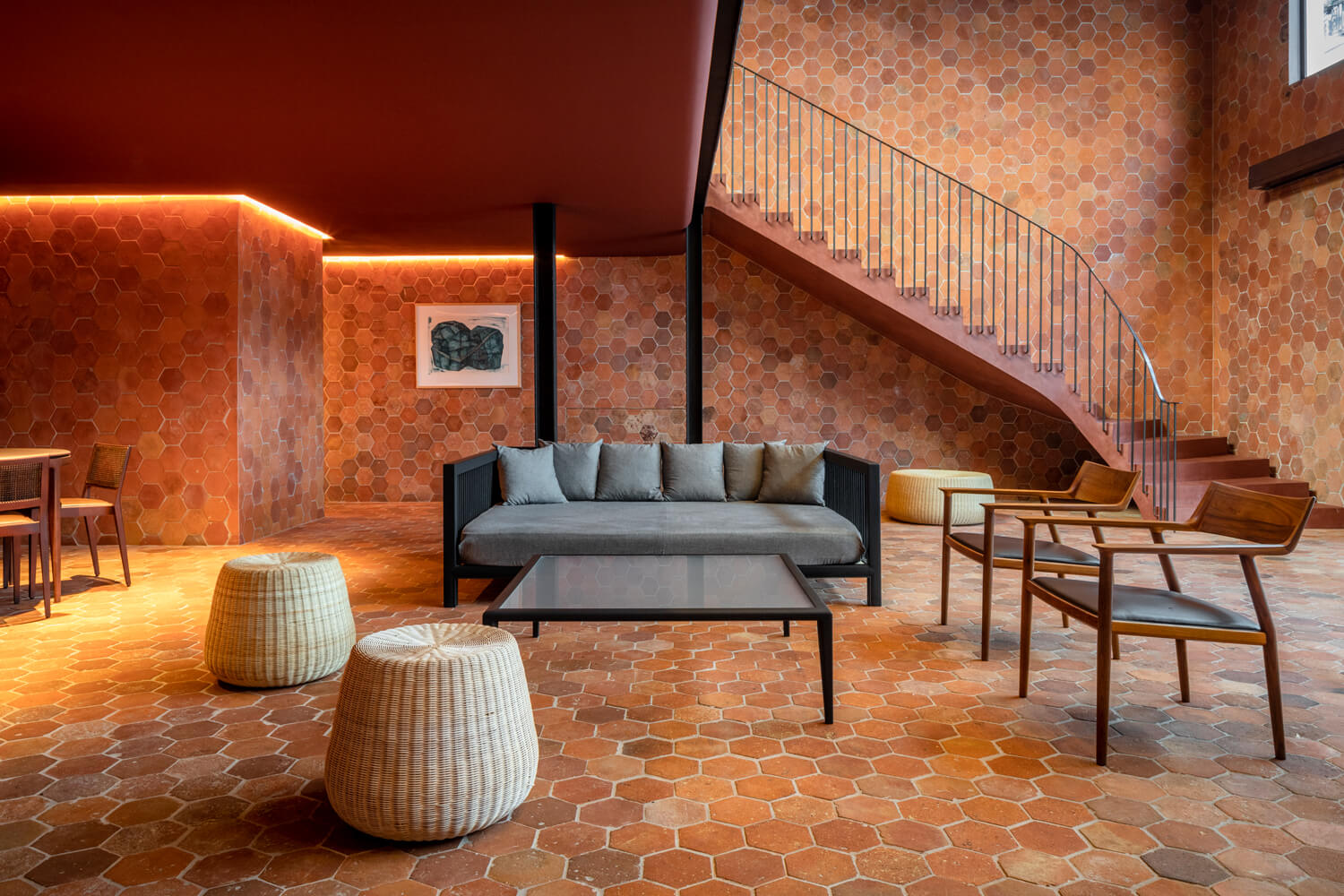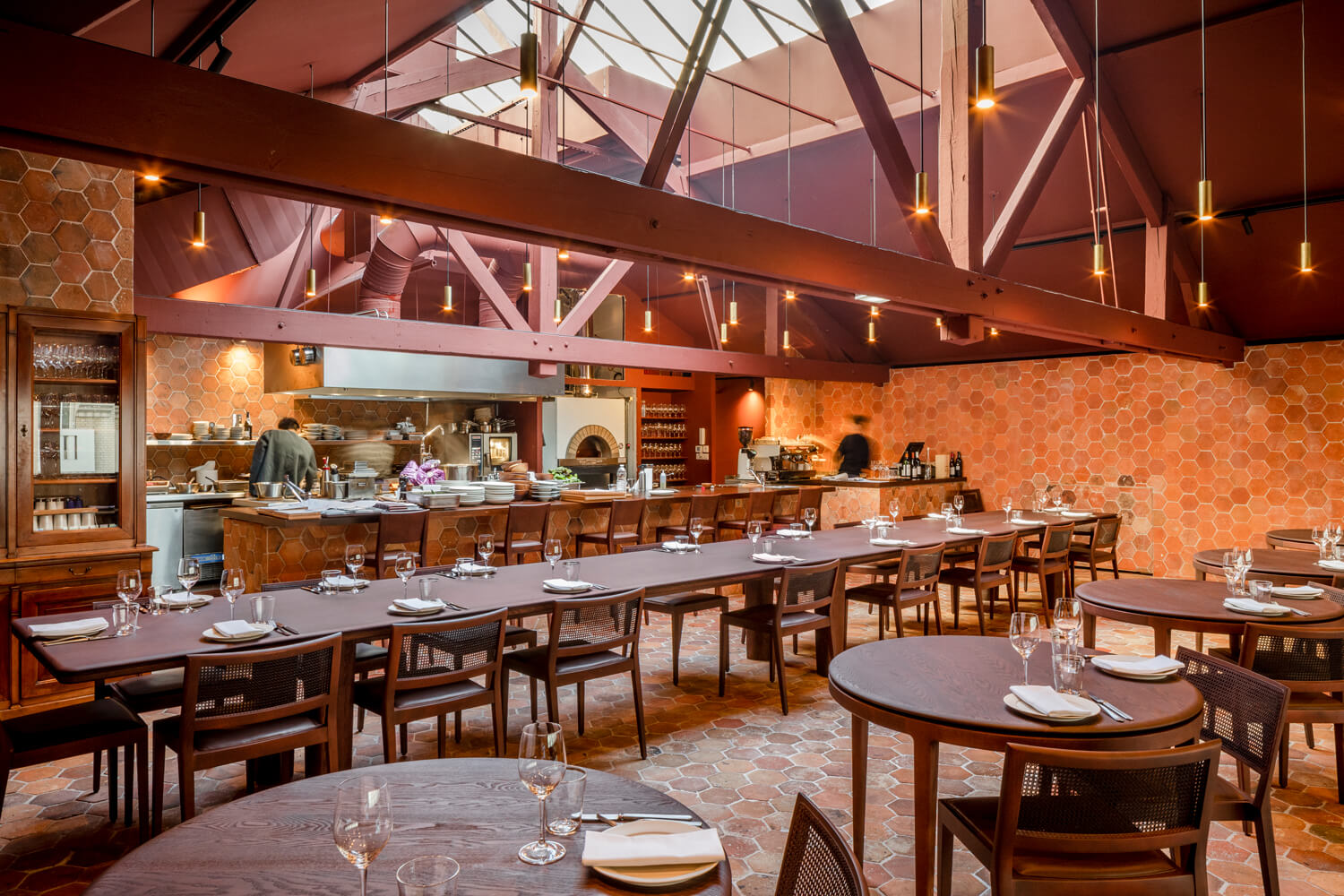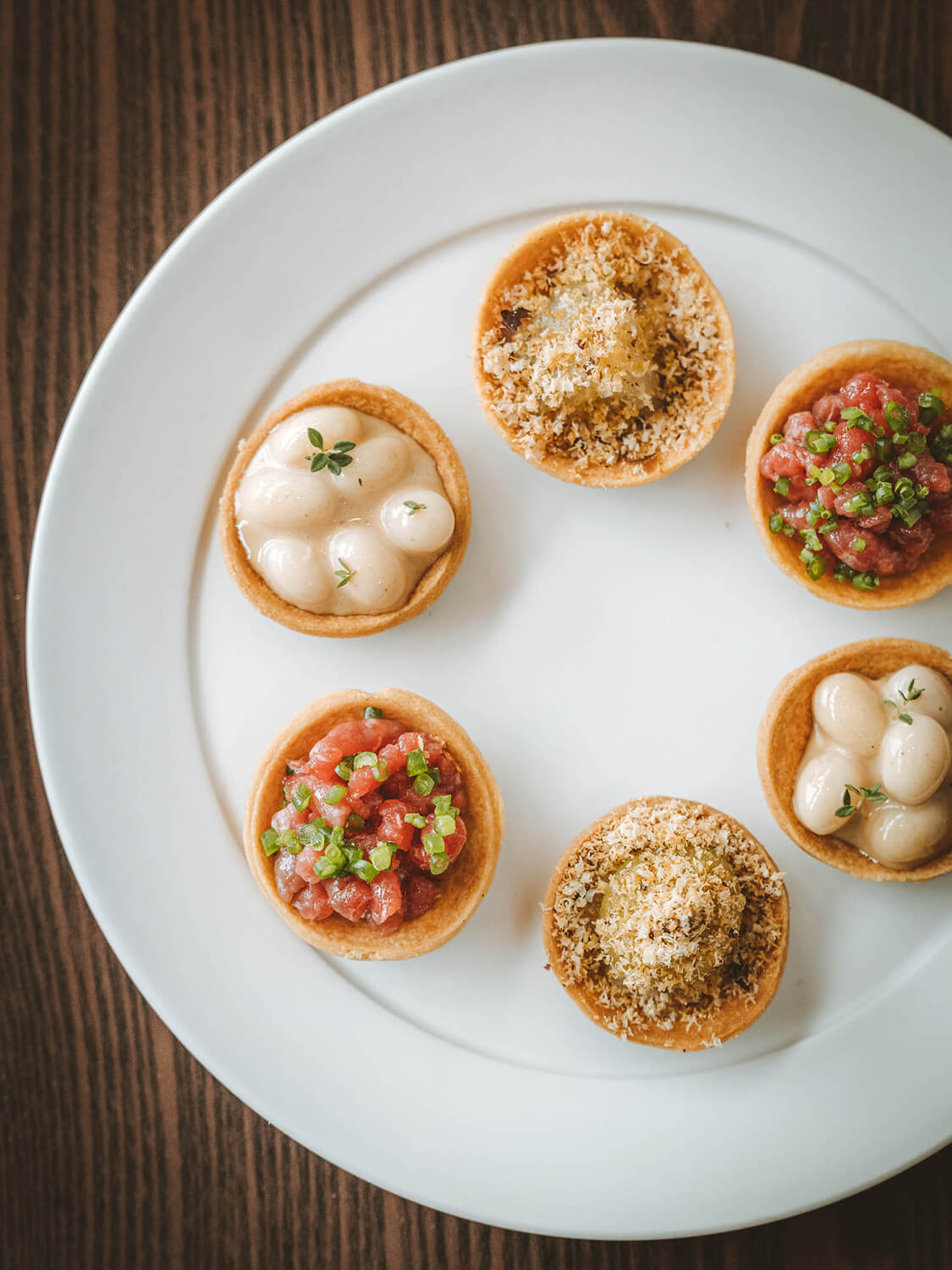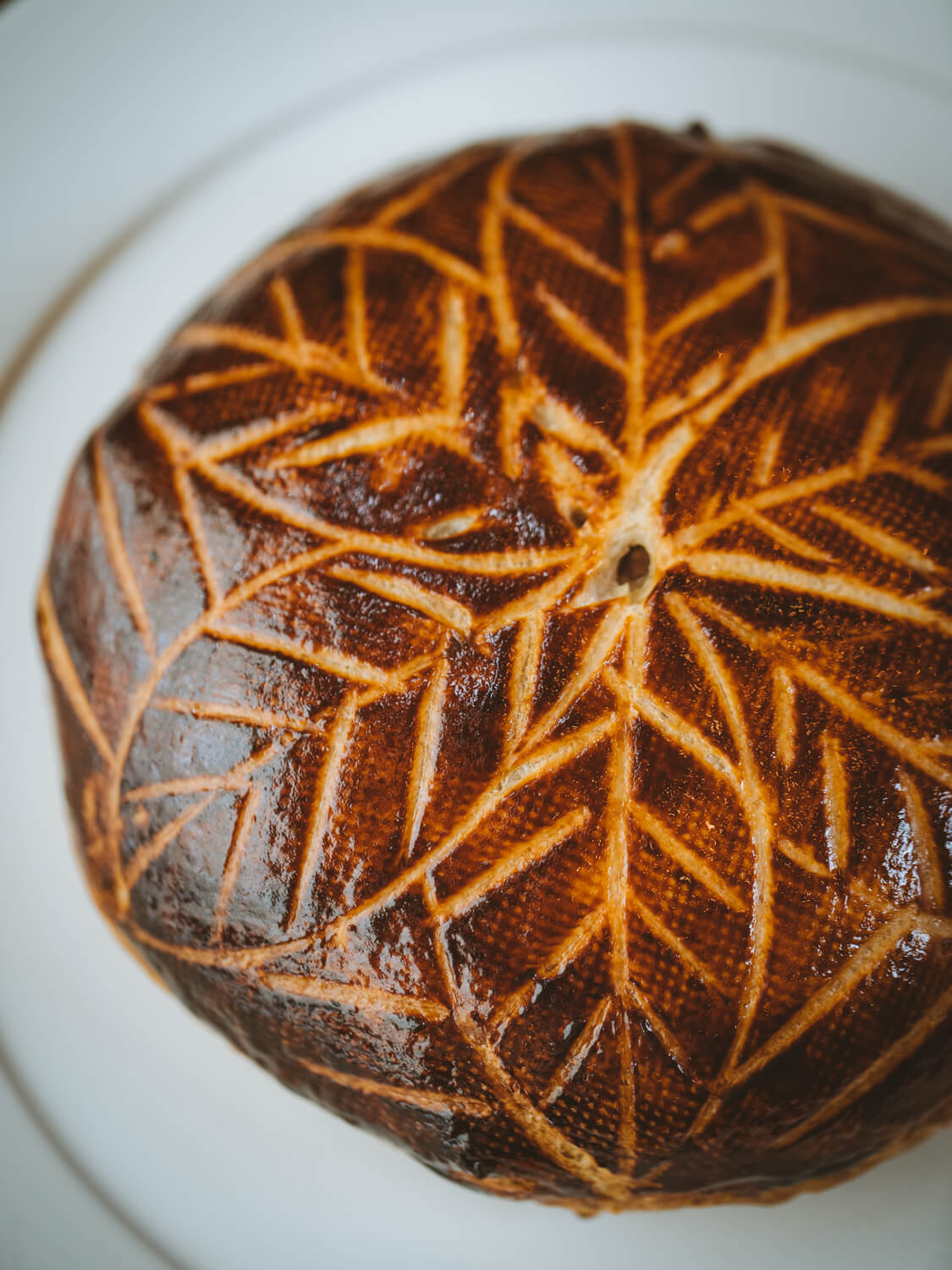Sota Atsumi, a Natural Chef
In his restaurant Maison, opened in September 2019, he offers gourmet cuisine in which attention is focused on fresh products.

© Clémence Leleu
Sota Atsumi is one of the most talked-about Parisian chefs. Since September 2019, he has been at the helm of his first restaurant, Maison. The building is reminiscent of a Basque house with its gable roof, and the inside walls are completely covered with hexagonal tiles. The chef wanted the gastronomic restaurant to be free from ostentation so that nothing would steal the spotlight from its true stars: the ingredients.
It must be said that Sota Atsumi, named in 2019 by the prestigious New York Times as one of the most influential chefs in the new Parisian guard, alongside his compatriots Taku Sekine (Dersou) and Bertrand Grébaut (Septime), had some impressive training. Born in 1987, he began his culinary apprenticeship at a school in Tokyo, but soon headed to France, where he spent a year on the Lyon campus of the Tsuji Culinary Institute, before cutting his teeth in Michelin-starred kitchens.
An apprenticeship alongside great French chefs
Sota Atsumi joined the brigades run by Joël Robuchon, an ardent lover of Japan, and Michel Troisgros. ‘I learnt a huge amount from them’, the chef remembers. ‘The technical foundations, the different cuts, the cooking processes, but also communication, which is very important in a team.’
However, it was whilst working with Pierre Jancou, who previously ran the Parisian restaurant Vivant, that Sota Atsumi really started to become the chef he is today. ‘We have to respect nature, ingredients, and choose the best products’, declares the chef, who gives top billing to seasonal fruits and vegetables and who takes a meticulous approach when choosing the farmers, market gardeners, and breeders he works with.
Sota Atsumi then worked in the kitchens of Clown Bar, the temple of bistronomy that’s a stone’s throw from the Cirque d’Hiver. From 2014 to 2017, he created sharing plates and signature dishes such as his duck pie, thanks to which the establishment became famous, causing everyone in the Haut-Marais to come flocking. The chef’s name was on everyone’s lips. With a reputation that preceded him, he decided to make the leap and open his own restaurant.
A restaurant in a house
‘He was set on opening his restaurant in a house’, explains Akiko Otsu, artistic director of Maison and wife of the chef. ‘We were very lucky because it was the first location we visited. It was obvious.’
The house, nestled in the heart of the 11th arrondissement, was occupied at the time by a Japanese caterer and needed a touch of imagination. The duo decided to redo the entire place: they knocked down the walls, fitted a mezzanine, and dropped the false ceiling to add a skylight, which fills the space with light. Japanese architect Tsuyoshi Tane was tasked with the construction work, which took around a year and a half. ‘Sota wanted a natural, warm space, which also reminded people of his love for the earth. That’s why we decided to cover the ground and walls with terracotta tiles’, Akiko Otsu explains. ‘Another vital element was the kitchen, which Sota wanted to be open.’
Before being able to move into the premises, the chef and his team of four, two chefs and two pastry chefs, crossed the Atlantic to hone their skills on a three-month residency sponsored by Chefs Club NY, a restaurant that hosts several chefs throughout the year. They then headed to Japan and to a restaurant owned by one of Sota Atsumi’s best friends, a trip that enabled the team to form stronger ties.
Maison opened its doors in mid-September 2019. Diners are welcomed upstairs and shown to an individual table or seated around a long wooden table that’s over eight metres long, evocative of the Last Supper.
Anchoring the cuisine in its own era
On the menu are simple but perfectly executed dishes, always with the same respect for the product. ‘My generation has to respect the heritage of French cuisine while developing it’, explains Sota Atsumi. ‘You have to cook in the best way; anchor the cuisine in its own era.’ As such, there’s no wasting ingredients in order to extract only the essential substance. ‘We test, we search, we build combinations’, he continues. He improvises on a daily basis with the ingredients selected by his suppliers, the majority of whom are French, Italian, and Greek, always depending on the season. Japan is therefore absent: there’s no fusion cuisine here. ‘Even though there is, naturally, a little bit of Japan in my dishes because that’s part of my culture, I don’t express it deliberately; it’s found in certain nuances.’
There’s no unsatisfied hunger in this chef; as yet, he has no plans to open a second restaurant. His sole project for the years to come is to make a lasting success of his restaurant, focusing on the cuisine in order to maintain a standard of excellence and build up a base of loyal customers. ‘We want them to continue to be surprised by what’s on their plate, but also to feel good.’ To feel at home, if you will.
More information on Maison can be found on the restaurant’s website.

© 11h45

© 11h45

© Joann Pai

© Joann Pai

© Joann Pai

© Joann Pai

© Restaurant Maison
TRENDING
-
The Tattoos that Marked the Criminals of the Edo Period
Traditional tattoos were strong signifiers; murderers had head tattoos, while theft might result in an arm tattoo.

-
Paris, Tokyo: Robert Compagnon
With his co-chef and talented wife, Jessica Yang, Robert Compagnon opened one of the top new restaurants in Paris: Le Rigmarole.
 3:31
3:31 -
Chiharu Shiota, Red Threads of the Soul
Last year, more than 660,000 people visited the retrospective 'Chiharu Shiota: The Soul Trembles' exhibit at the Mori Art Museum.

-
‘Before Doubting Others, Doubt Yourself. Who Can Truly Say a Dish Isn’t What It Used to Be?’
In ‘A Non-Conformist’s Guide to Surviving Society’, author Satoshi Ogawa shares his strategies for navigating everyday life.

-
The Story of Sada Yacco, the Geisha who Bewitched Europe
Described by Dazed magazine as the first beauty influencer, she has been restored to her former glory since 2019.





